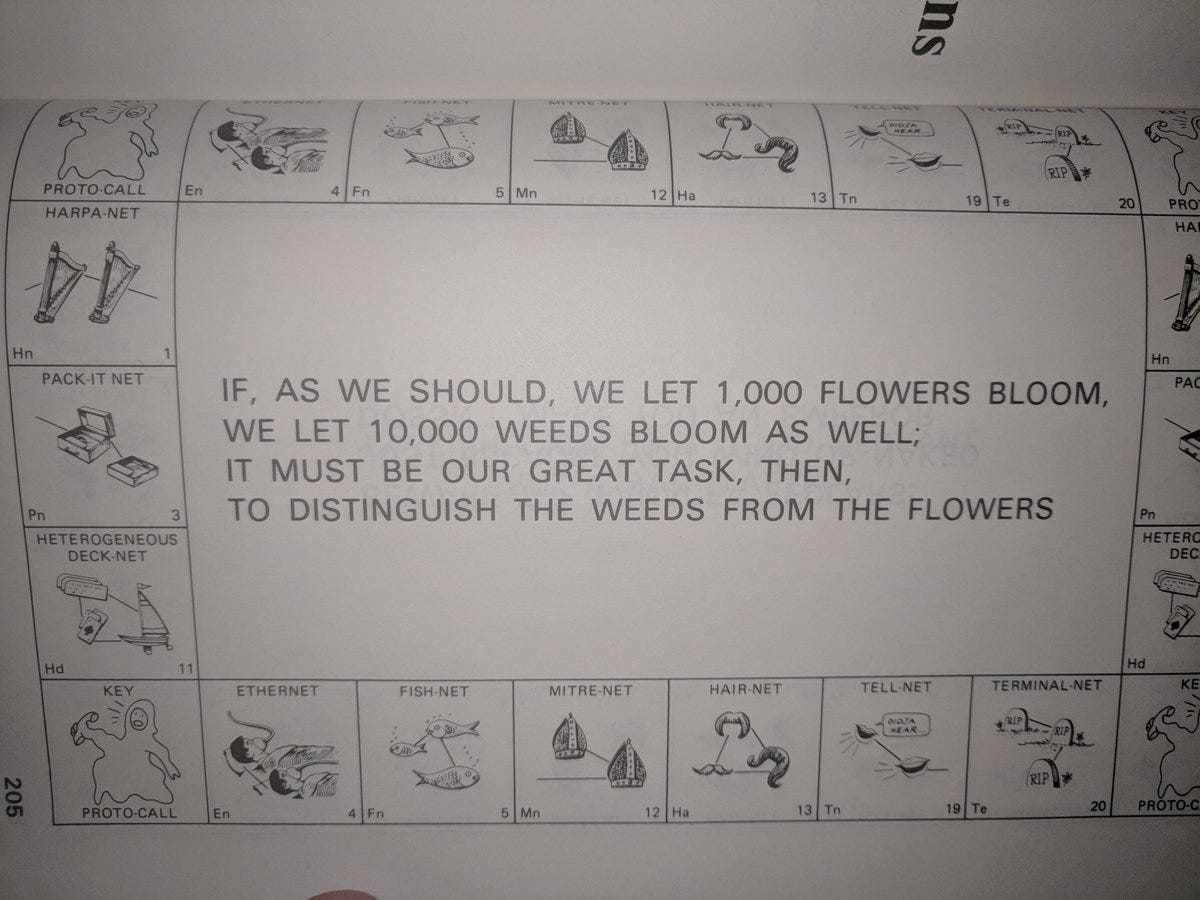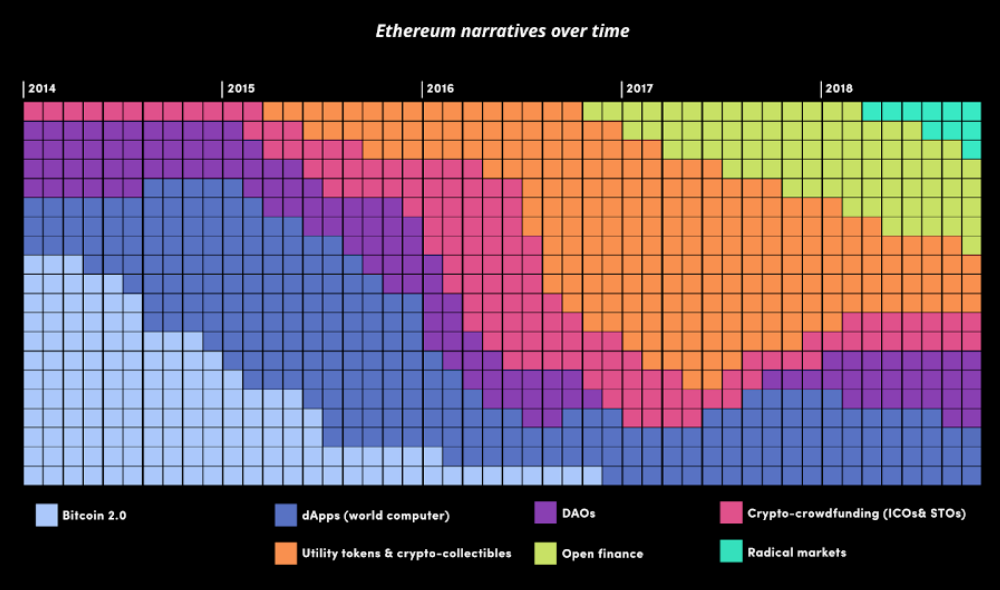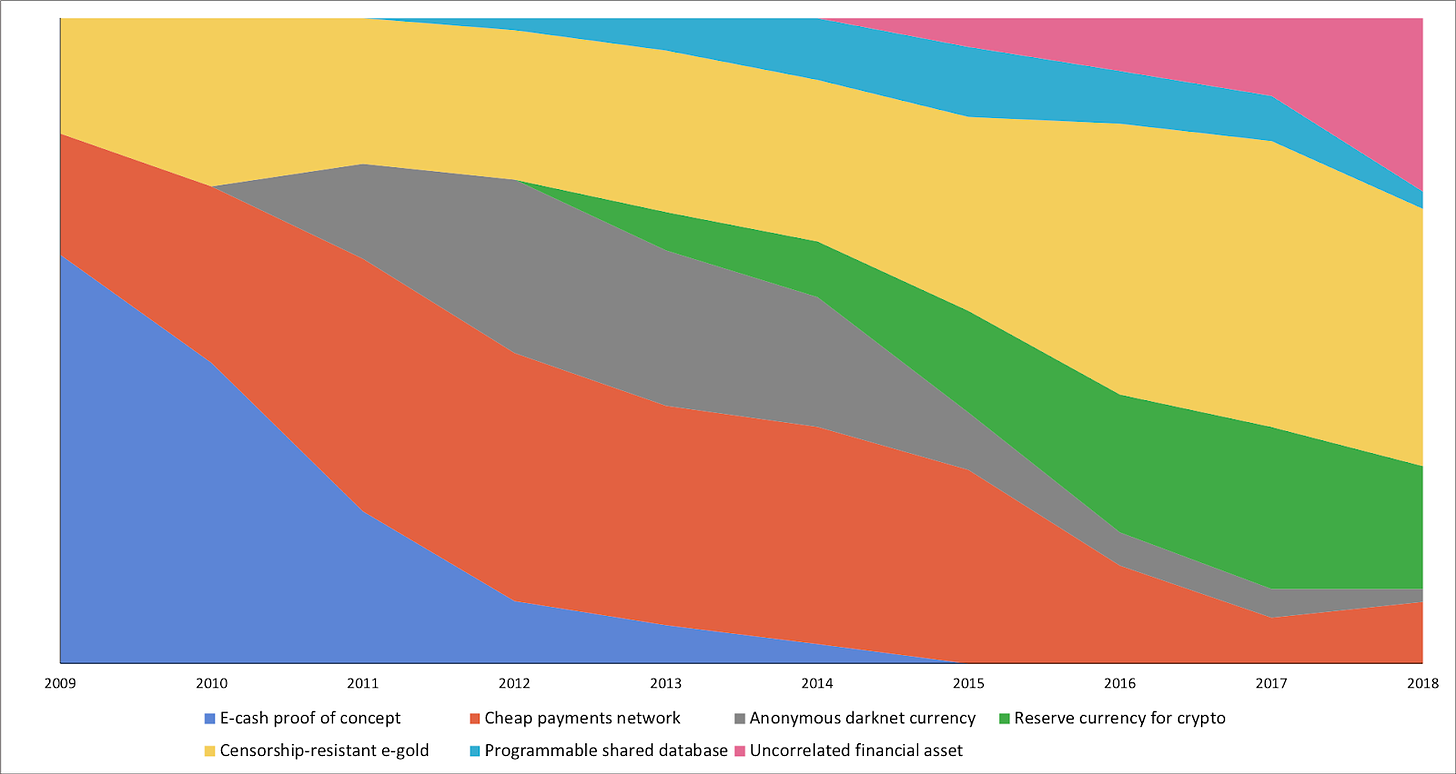

Discover more from The Held Report
The Rise and Fall of Crypto Narratives
Narratives weave the reality around us
Beliefs are not only shaped by reality; narratives define it.
These narratives constitute the fabric of the world around us: government, religion, culture, and finance all exist simply because we believe in it. Including money.
Money is a belief system. The only reason your local government issued currency has value is due to a shared belief that it will be valuable in the future.
Crypto is no different.
Rise and fall of crypto narratives
Each crypto project races to develop narratives that will create excitement and induce demand (read: increase price), since most lack any real traction (What I will call Protocol Market Fit or PMF).
“If you can't dazzle them with brilliance, baffle them with bullshit.” - W.C. Fields
This lead to a Cambrian explosion of narratives as each coin explored ways to differentiate themselves against the others. Most were tied to some semi-plausible technobable, but others were downright insane. Examples include:
PutinCoin
Whoppercoin
And PotCoin, which was repped by Dennis Rodman and had a $100M market cap at its peak.
Over the the last 8 years, over 10,000 cryptocurrencies have come and gone, with over 50% dying in under one year.
Below I cover the ebb and flow of these narratives across two distinct crypto cycles: the simple narrative era (2013-2016), and infinite narratives era (2017-2020).
The simple narratives era (2013 - 2016)
“More scaleable than Bitcoin”
You know what’s more scalable than Bitcoin? Almost everything. Blockchains make extreme design tradeoffs (ex: copy of the ledger on every node) to enable decentralization/scarcity which is what makes Bitcoin useful/valuable. If a certain project is more scalable than Bitcoin, then it’s made some design tradeoff which critically undermines what makes it valuable in the first place.
A popular metric in this era was “TPS: Transactions Per Second” for “more = better” braindead analysis. You know which protocol has the most TPS? Visa.
”Faster than Bitcoin”
Nothing is “faster” than Bitcoin. It’s about the security of each confirmation x the number of confirmations = total aggregate confidence that the transaction won’t be reversed. You can think of it like layers of amber, each confirmation (layer) and it’s relative security (thickness) determine how permanent the transaction will be secured in time.
As you can see with this chart, while a Litecoin transaction has shorter blocks, it has less of a guarantee due to the weaker security. 6 Bitcoin confirmations is equivalent to 712 Litecoin confirmations.
”Blockchain not Bitcoin”
“Blockchain” became a catch all term for innovation. Small and large company executives were incentivized to use the word. If you were big corporate, saying the word “blockchain” made you seem hip. If you were a startup, “blockchain” got you 50% more funding.
Humans respond to incentives. The incentive was to use the word “blockchain,” and so they did. Again, blockchains are inherently bad at almost everything. They’ve sacrificed everything to optimize for sound money.
“I haven’t seen one [use case] that even scales beyond an individual or a small set of transactions,” Bessant said. “All of the big tech companies will come and say ‘blockchain, blockchain, blockchain.’ I say, ‘Show me the use case. You bring me the use case and I’ll try it’.” - Cathy Bessnat, Head of tech and operations at Bank of America
When was the last time you heard about a corporate blockchain project?
Where did all this efficiency that blockchains were supposed to unlock manifest itself in your daily bank transfers or other traditional finance products?
Infinite narratives era (2017 - 2020)

If you’ve been around since the last bull run you probably remember….
ICOs.
These were supposed to change the world right? An ICO for your car, an ICO for global warming, an ICO for anything you wanted.
What happened with ICOs was the market creating narratives and appending a coin to them to satisfy all speculative demand for the next big thing. Thousands of narratives were created. And thousands faded away.
There were other “innovations” aka narratives, like:
TCRs
Utility tokens
DAOs
Dapps
How many of those came to pass? Which one of those are you using today on a daily basis? When was the last time you heard someone on the street mention one of those? After 3-4 years we certainly would have seen more traction if it was truly solving a problem.
Ethereum
The Ethereum community has endorsed radical changes/pivots, trying to find narrative fit (aka Protocol Market Fit), even so far as to recently claim a Store of Value (SoV) narrative. The Ethereum leadership team is more willing to embrace alternations to the core objective of the protocol in their search for PMF (world computer, dapps, crowdfunding, nonfungibles, open finance, radical markets).
Ethereum is an aggregator of these narratives, trying each one out over the years in an attempt to seduce Bitcoin and other believers.
But there is no persistence of a singular narrative, Ethereum still trying to find PMF even after all this time.
The only persistent narrative: Store of Value/Gold 2.0
Bitcoin is not immune to the ebb and flow of narratives. Over the years, many narratives faded in and out of popularity. The chart above shows that movement over time, although it was created 2 years ago so it’s a bit outdated.
However, Bitcoin is distinctly different than all the other blockchains because it has had a persistent narrative since day one: Gold 2.0/SoV (Store of Value).
Bitcoin was built to solve the problem of trust with governments, to be a store of value that you could send anywhere/anytime without trusting anyone else.
Bitcoin’s narrative matches the real world utility.
HODL,
Dan Held
Sources:
Death rate of ICOs








